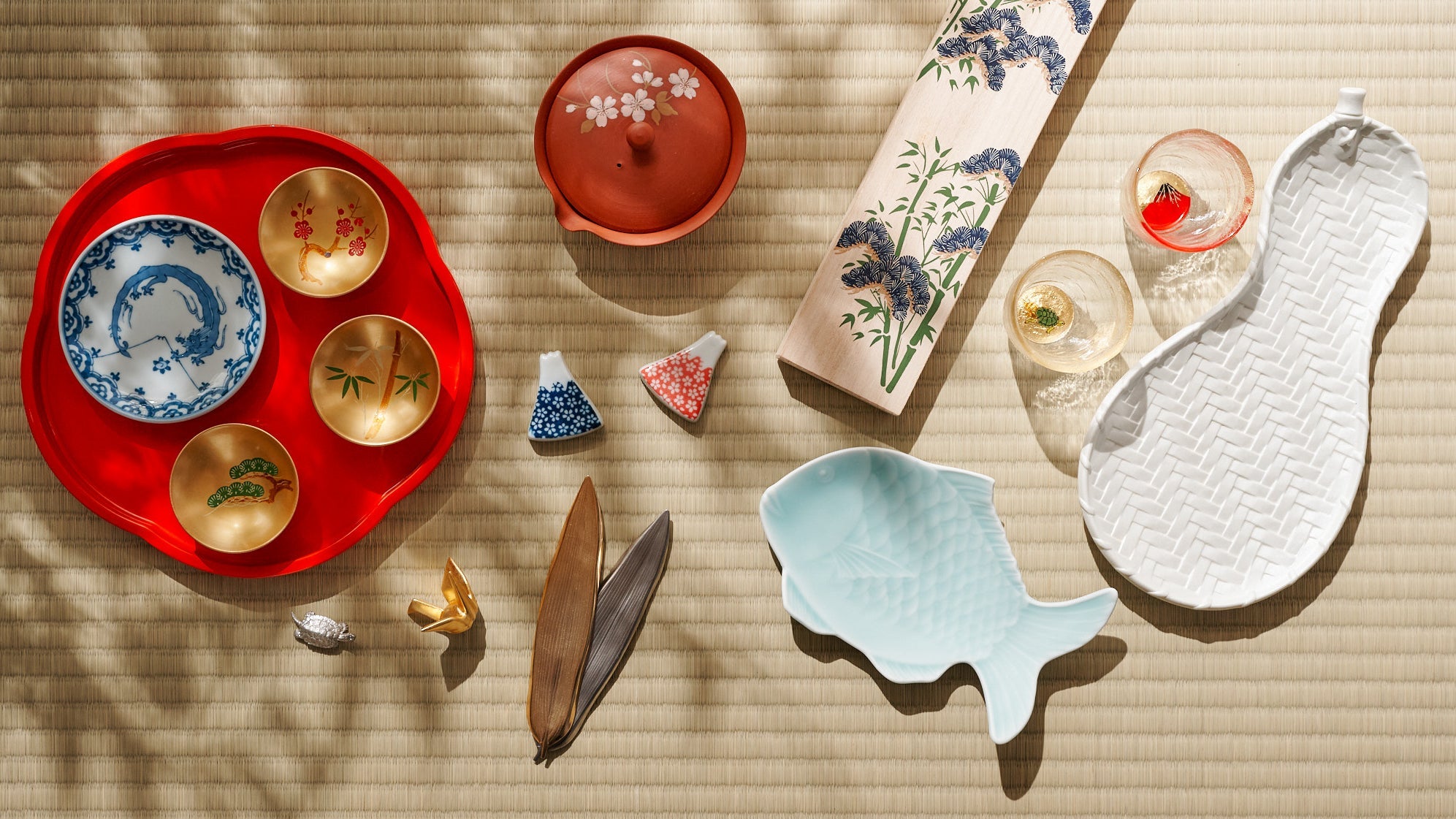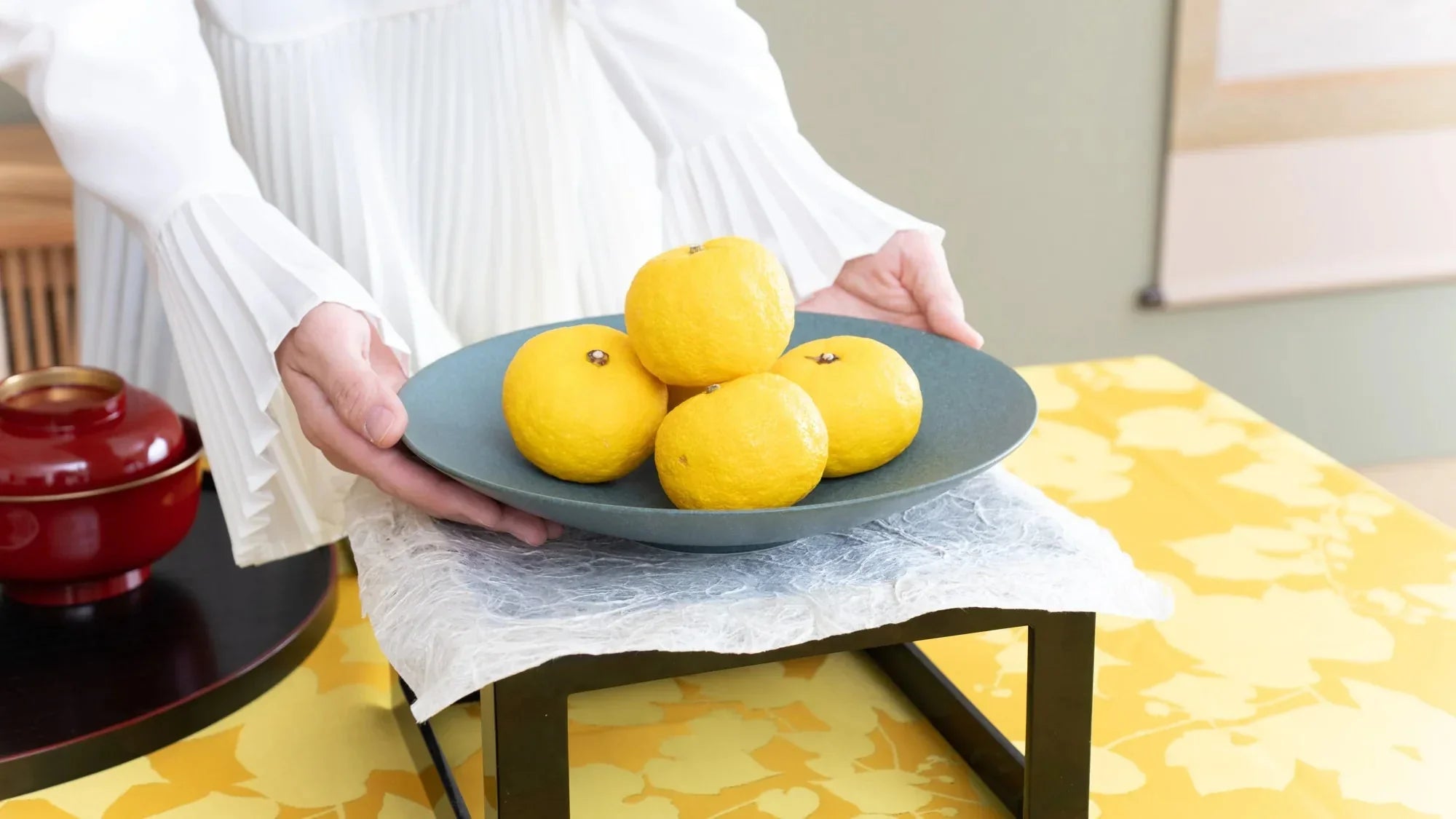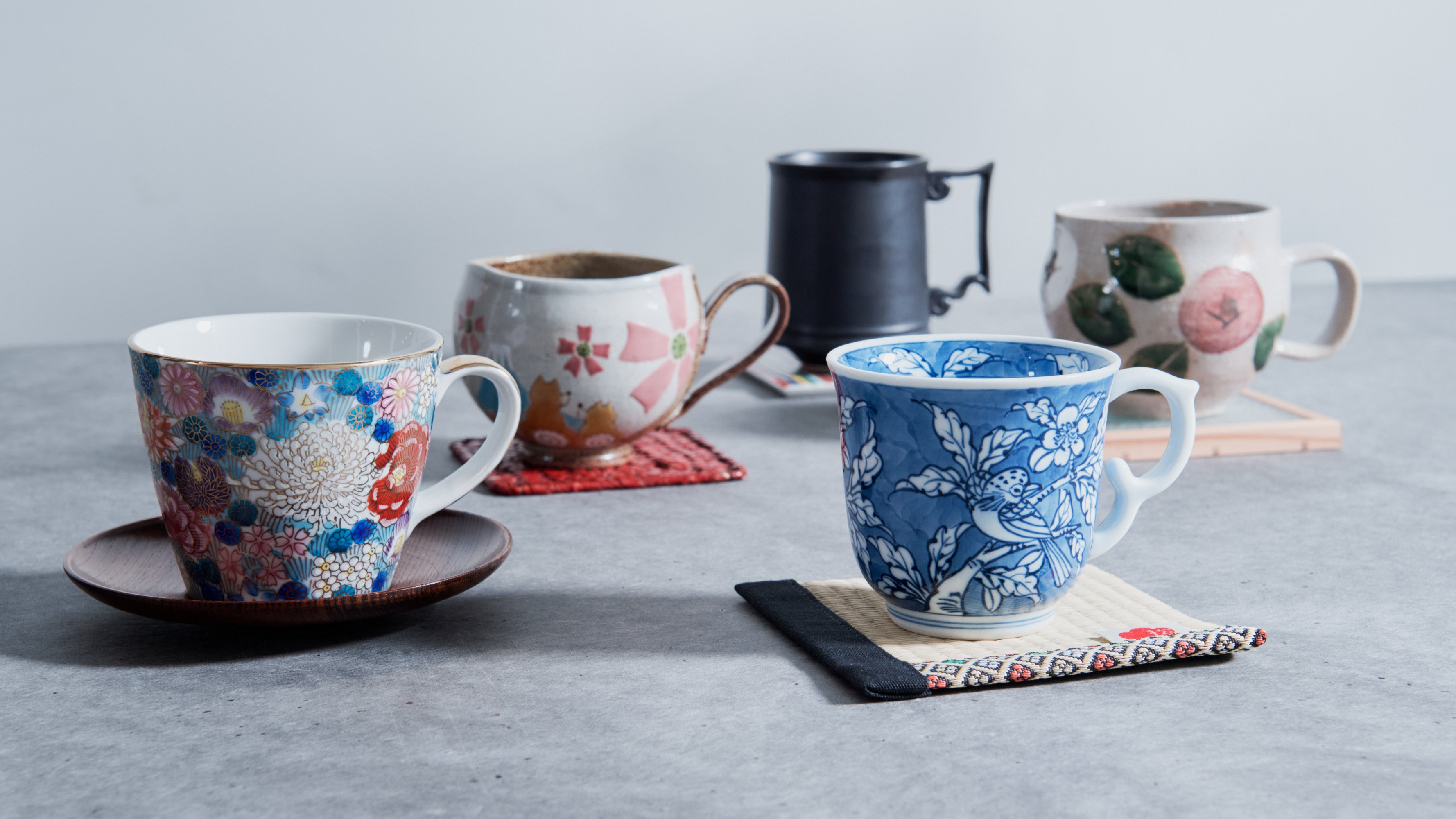
Kombu: Japan’s Seaweed Marvel
Written by Team MUSUBI
When you think of kombu (kelp), you might picture large, unprocessed sheets used to make savory dashi broth, or the tender, knotted strands of kombu nestled in a steaming bowl of oden. However, in Japan, kombu is more than just a flavorful ingredient. It is the very foundation of umami and a symbol of wellness, deeply woven into the country’s culinary and cultural heritage.
During a recent visit to Tsukiji's renowned Suita Shoten, a family-run specialty shop with over a century of history, we had the chance to explore kombu in its most refined and creative forms—from wild-harvested kombu in its natural state to delicately crafted pieces shaped into the twelve animals of the zodiac.
In this comprehensive guide, we invite you to explore the hidden world of Japanese kombu, including its diverse varieties, culinary applications, and the reasons it continues to captivate chefs and health-conscious food enthusiasts worldwide.

Table of contents
Kombu and Its Culinary Legacy
Kombu, the mineral-rich seaweed that underpins much of Japanese cuisine, has a history as deep and layered as the dashi it’s used to flavor. As a defining element of Japanese taste, kombu is now firmly embedded in the national diet, but its roots stretch back so far that precise historical records are virtually nonexistent. Some scholars suggest that as early as the late Jomon period (14,000–300 BCE), seafaring peoples from the Jiangnan region of China arrived in Japan while living aboard boats. These early migrants may have consumed kombu as food and used it as a medium of trade with the continent, or even as tribute offerings to local chieftains. Although concrete evidence is scarce, this theory aligns with broader patterns of maritime exchange in prehistoric East Asia.
Another widely accepted theory holds that the word is a linguistic evolution of kompu, a term originally used by the Ainu people, the Indigenous inhabitants of Hokkaido. This word is believed to have made its way to China and eventually returned to Japan as a transformed foreign loanword. The earliest documented reference to seaweed resembling kombu appears in the Shoku Nihongi, an 8th-century historical chronicle from the Nara period (710–794 CE), which records kombu being presented as tribute to the imperial court—a testament to its early prestige and value.

Beyond its role in the kitchen, kombu has long carried symbolic weight in Japanese society. Its phonetic resemblance to the word yorokobu (to rejoice) led to its association with good fortune, celebration, and longevity. Another historical name for kombu, hirome, echoes the word hiromeru (to spread or to expand), reinforcing its status as a lucky charm for prosperity and growth. The word hirome is said to be the origin of the modern Japanese term ohirome, which refers to a wedding reception or formal introduction of newlyweds. In addition, kombu was already being served at celebratory banquets during the Heian period (794–1185 CE). Later, following these imperial court traditions, it came to be regarded as a lucky charm by samurai heading into battle during the Muromachi period (1336–1573 CE).
Kombu’s legacy, then, extends far beyond its culinary versatility. It is a symbol of endurance, adaptation, and cultural continuity—a humble seaweed woven into Japanese life. Understanding its journey offers a fuller appreciation not only for Japanese food but for the histories and meanings simmering beneath each bowl of soup.
A Closer Look: The Main Types of Japanese Kelp
While kombu is often used as a blanket term for kelp in Japanese cooking, it's not a one-size-fits-all ingredient. There are several distinct varieties of kombu, each with its flavor profile, texture, and culinary strengths. Understanding the differences between them is key to appreciating the nuance and depth of Japanese cuisine. Below are four of the most commonly used and highly regarded types.
Ma kombu
Harvested primarily from the calm, mineral-rich waters off southern Hokkaido, it has a thick, broad leaf with a smooth surface and pale green-brown hue. The flavor it yields is refined, clean, and slightly sweet, making it ideal for producing clear dashi. In the Kansai region, especially in Osaka, it is particularly popular. Among kappo restaurants, it's often the first choice of chefs who prize refinement and balance in their cuisine.

Rausu kombu
Coming from the Rausu area on the eastern coast of Hokkaido, Rausu kombu is known for its strong umami content and rich, full body. It has a slightly darker color and softer texture, which allows it to release its flavor more quickly into water. The dashi it produces is bold, aromatic, and greatly satisfying—ideal for heartier dishes and home-style cooking where a pronounced taste is desired. Especially popular in the Kanto region, this kombu is favored for its depth and versatility in everyday meals.

Rishiri kombu
Harvested near the remote Rishiri and Rebun islands along the northern coast of Hokkaido, Rishiri kombu is revered for producing a clear, sharp dashi with minimal color and a crisp, briny backbone. Its flavor is more restrained compared to Rausu kombu, but this clarity makes it a favorite among professional chefs, especially in Kyoto kaiseki, where subtlety and refinement are paramount. Visually, it has a distinctive dark brown to black hue, and its texture is notably firmer than other types of kombu.

Hidaka kombu
Hidaka kombu is harvested along the southern coast of Hokkaido’s Hidaka region, where mountain-fed rivers enrich the surrounding waters with nutrients. This natural environment makes it one of the most nutrient-dense kelp varieties in Japan. Unlike firmer types of kombu used primarily for broth, Hidaka kombu is prized for its versatility: it performs equally well as a source of dashi and as an edible ingredient in its own right. It absorbs surrounding flavors beautifully while maintaining a pleasant, satisfying bite, making it a favorite for everyday home cooking.

Visiting Suita Shoten in Tsukiji Market
After exploring the many varieties of kombu and the cultural threads it weaves through Japanese cuisine, we wanted to experience it not just in theory, but in place, in the rhythm of everyday life, where kelp isn’t a trend but a tradition. So we made our way to Tokyo’s Tsukiji Market, more precisely, the Tsukiji Outer Market, the section that remained after the inner wholesale market relocated to Toyosu.

Tsukiji Outer Market is a bustling culinary hub that still hums with the energy of old Edo. Tucked among rows of fishmongers and knife shops, we found Suita Shoten, the market’s only dedicated kombu specialty store. With over a century of history behind it, this family-run shop has preserved the craft, knowledge, and spirit of kombu culture across generations.

Tokyo in July bakes under the fierce blaze of the midsummer sun. Yet not even the heat can deter travelers from around the world as they pour into this vibrant metropolis where tradition and modernity intertwine at every corner. Nowhere is this energy more palpable than in Tsukiji. The streets pulse with life. Faces from every continent weave through the market’s alleys, unfazed by the scorching sun, drawn by something deeper than curiosity: a hunger to taste the soul of the city, one bite at a time.

Step out of Tsukiji Station and walk straight ahead. Just past the solemn facade of Tsukiji Hongwanji, you’ll find yourself at a bustling intersection. On the corner stands our destination for the day: Suita Shoten.


As we stepped into the shop, weaving our way past shelves brimming with elegantly packaged products, we headed upstairs to the office area. There, we were warmly welcomed by Suita Katsuyoshi, the fifth-generation owner of Suita Shoten, who graciously shared the rich history of his family’s business.

Founded in 1892 in Osaka, Suita Shoten expanded to Tokyo in 1927, establishing a presence in Japan’s eastern capital during a time of notable culinary contrast between regions. As Suita explained, the Kansai region, where Osaka is located, traditionally relied on kombu as the primary source of umami in dashi. In contrast, people in the Kanto region, including Tokyo, favored katsuobushi—dried and smoked bonito flakes—for the same purpose.
However, the Great Kanto Earthquake in 1923 altered more than just the city’s skyline. In the years of reconstruction that followed, many construction companies from Kansai moved into Tokyo, and with them came new culinary preferences. Slowly but surely, the taste for kombu-based dashi took root in the capital.
Today, many of Suita Shoten’s customers are long-established restaurants dedicated to crafting dashi with uncompromising quality. Their commitment to flavor demands only the finest kombu, which is something Suita Shoten has mastered over generations.

Suita then shared a wealth of insider knowledge about kombu, offering details that only those familiar with the trade would likely know. “Kombu doesn’t go straight from the sea to the shelf,” he explained. “Summer is the harvest season, but we don’t purchase it until autumn. After that, we store it for a full year before selling it.” This aging process, he told us, allows the strong briny aroma of the seaweed to mellow. In turn, the umami becomes more refined and concentrated, a level of richness prized by chefs who understand the subtle architecture of a good dashi.

That led us to a question we’d been holding onto since walking through the first floor: why was everything, from the shelving to the display cases, made of wood?
Smiling, Suita nodded as if he’d been asked this before. “The building itself is made of concrete, which doesn’t breathe or absorb moisture well,” he said. “But kombu needs a dry environment to age properly. Wood naturally helps regulate humidity.” Then he added, almost as an aside: “In fact, the wooden floor we’re standing on isn’t just for show. Beneath it, we’ve layered wood shavings, which draw in moisture even more effectively.” It was a reminder that behind the simplicity of the space was a legacy of craft, built on generations of observation and care.


Among the many items on the first floor, two in particular caught our eye: one featuring the kanji character “kotobuki” (寿), symbolizing longevity, and another adorned with an illustration of a snake, one of the twelve animals of the Japanese zodiac. Suita explained that the Japanese have a deep cultural affinity for the zodiac, and it’s common to incorporate such motifs into New Year’s celebrations. “During the New Year,” he said, “people often use these decorative pieces of kombu in traditional dishes like ozoni. Not only because they taste good, but because they carry layers of symbolic meaning.”

Beyond the fundamentals of kombu itself, we came to understand how this humble ingredient reflects the soul of Japanese cuisine. As Suita explained, “In Japan, we have a saying: en no shita no chikaramochi—someone who works quietly behind the scenes, supporting everything without seeking attention. That describes kombu perfectly.”
Japanese cooking is built on the idea of drawing out the natural flavors of ingredients, rather than masking them with heavy sauces or elaborate seasoning. “In winter, we eat daikon or crab; in spring, cabbage and bamboo shoots; in summer, cucumbers, tomatoes, eggplant,” he said. “The goal is not to overpower, but to bring out the best in each ingredient.”
Kombu plays a silent but essential role in this process. It doesn’t impose its own flavor but instead highlights what’s already there. It gently removes off-notes such as grassy bitterness in vegetables, while coaxing out their inherent sweetness or richness. In that sense, kombu doesn’t change the food; it reveals its potential. It’s not about adding, but about refining. And in that restraint lies the sophistication of Japanese cuisine.

Through our conversation, we also learned that Suita Shoten is more than just a kombu retailer; it’s also a passionate educator. The shop regularly hosts kombu workshops for students, adults, and even international visitors. These classes introduce participants to the history, varieties, and uses of kombu, and they also feature tastings of dashi made from different types of kelp.
In the course of our interview, this specialty kombu shop shared with us a wonderfully simple and delicious kombu dashi recipe.
1. Prepare the Kombu
Use a piece of high-quality kombu.

2. Heat the Water
Warm water to about 60–70°C (140–158°F).

3. Soak the Kombu
Place the kombu in the hot water and let it soak for about 5 minutes. That’s all it takes to draw out its natural umami.

Suita told us with a smile. “When I demonstrate this during the workshop, people are always surprised.” He continued, “Nowadays, everyone’s busy, and supermarkets are filled with instant dashi products. But making dashi from kombu is much easier than most people think, and we want to show them that.”
Earlier in the interview, Suita had touched on a more sobering point: kombu production is in decline. Rising ocean temperatures and a shrinking labor force in the harvesting industry have made it increasingly difficult to maintain supply. At the same time, modern lifestyles and changing cooking habits mean that fewer people use kombu at home. “It’s such a deeply flavorful and beautiful ingredient,” he said. “It would be a real loss to see it fade from everyday life.”

As our interview drew to a close, something overhead caught our eye—a long, curious object stretching across the ceiling of the shop. We had somehow missed it until that moment. “Oh, that?” Suita said with a laugh. “It was a gift from a friend. It’s a tool used to harvest kombu from the sea.” He gestured toward it with obvious fondness. “You use it a bit like a fork twirling pasta,” he explained. “You twist it underwater to wind the kombu around the prongs and lift it from the ocean floor.”
Kombu doesn’t demand the spotlight, but its presence is felt in every bowl it touches. It brings depth without distraction, and harmony without excess. In a fast-paced world, kombu is a reminder to slow down, pay attention, and honor what works behind the scenes. And in doing so, it leaves a taste that lingers far beyond the meal.
Suita Shoten
4-11-1, Tsukiji, Chuo-ku, Tokyo








Leave a comment
This site is protected by hCaptcha and the hCaptcha Privacy Policy and Terms of Service apply.